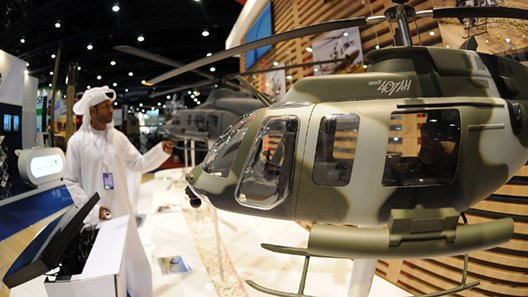Saudi Arabia and the United Arab Emirates (UAE) have been quietly but steadily developing their indigenous defense capabilities over the past decade, according to a new report by the Atlantic Council’s Brent Scowcroft Center. In The Gulf Rising: Defense Industrialization in Saudi Arabia and the UAE, senior fellow for Middle East Security Bilal Y. Saab argues that self-sufficiency is not a realistic goal for Saudi Arabia and the UAE. But in some limited security and defense areas both countries have made steps forward. Furthermore, both countries’ military personnel have drastically enhanced their military training and competency and can now operate some of the most sophisticated weapons systems. They have also steadily increased their defense spending as part of their gross domestic product (GDP) and successfully absorbed some technology transfers.
Yet these accomplishments notwithstanding, Saab maintains that embarking on a successful path to domestic military industrialization could require nothing short of a total state effort and a societal transformation. To develop, rationalize, and sustain the process for the long term, Saab recommends that both countries:
- integrate the process of local arms production into the broader context of national defense policy and arms acquisition;
- formulate clear defense production policies and create overarching bodies for long-term defense planning;
- organize their national defense establishments by creating credible and authoritative institutions as well as solid legal and administrative frameworks;
- adopt a diverse approach to technology transfer that addresses actual needs and realities;
- develop a more robust local R&D capability that would have more direct interaction with the users—the armed forces and foreign clients;
- ensure a greater role for the private sector in funding the enterprise of military industrialization;
- integrate offset programs into national strategies for industrial development;
- further invest in MRO; and
- develop a joint, Saudi-Emirati MRO base and an integrated or complementary services and production infrastructure.
Saab analyzes the implications of Saudi and Emirati defense industrialization and argues that “efforts by Saudi Arabia and the UAE over the past decade to upgrade their national defense capabilities by purchasing arms and pursuing domestic military industrialization contribute to US strategic plans and interests in the Middle East and are generally consistent with the broader US commitment to expanding its global partnerships and strengthening its friends and allies’ defense capabilities.” However, Saab cautions that “should current political uncertainties in US-Gulf relations persist and, more dramatically, a strategic rift between Washington and Riyadh develop in the future due to major policy differences, intensified defense industrialization in the Gulf could carry risks to US strategic interests in the Middle East.”



